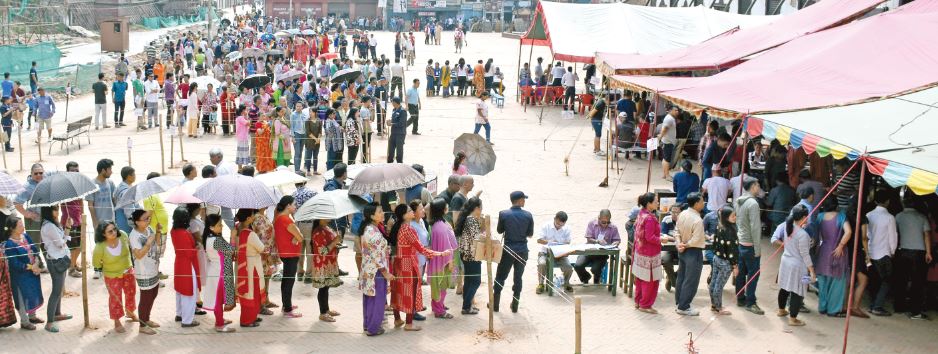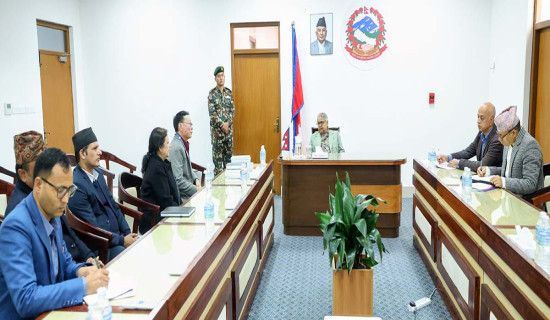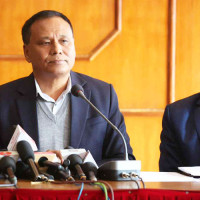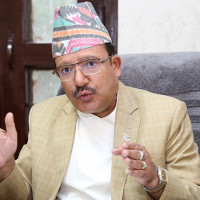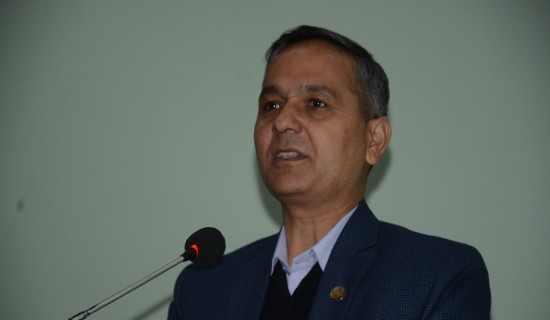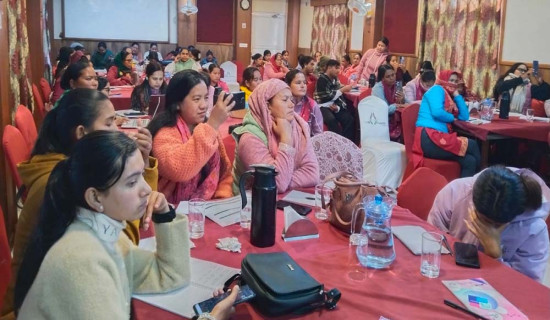- Wednesday, 24 December 2025
Excited to choose own government
Kathmandu, May 7: Since the promulgation of the constitution on September 20, 2015, the first phase of its implementation is completing. In accordance with the federal set-up, of the three-tier government in the country, election of the local level was held first in 2017. That term is about to complete.
Local polls for the second term are scheduled for May 13. Once held, periodic election in line with the implementation of the constitution will complete one cycle.
During their first five-year term, local level representatives have effectively made the presence of the government felt in their respective local levels. By implementing executive, judiciary and legislature from the local level in line with the constitution, they have been able to make the people feel the presence of a government.
Although the constitution has given local government 52 per cent of the rights, the federal government has set aside only 14 per cent of the total budget for it. Should they get enough resources and manpower, local bodies can deliver far more than they are doing now, said local governance expert Ramesh Kumar Adhikari.
But the constitution has granted the local levels rights to make their own laws and implement them. During that period, local levels have enacted a minimum of 35 laws and a maximum of 65 laws, according to Municipal Association of Nepal (MAN) and National Federation of Rural Municipalities.
MAN chief executive officer Kalanidhi Devkota said that, after the coming of representatives in the local levels, villages are moving towards urbanisation while the urban areas are becoming new. According to him, old narrow trails in the local levels have become at least gravel road or black-topped road.
Villages and settlements have now access to drinking water. Those who had to cross the mighty rivers risking their life by tuin now have suspension bridge to go across the river.
Coordination among federal, province and local-level governments have made the life of villagers easier. Modernisation and mechanisation in agriculture have increased the agricultural output.
With the use of improved seed, fertiliser and technology, the villages which harvested two crops in a year are now able to harvest four.
The private houses, community schools, temples, which were razed down to the ground by the 2015 earthquake, have now been reconstructed.
In all these efforts, representatives of the local level have played a special role. Devkota said, “The citizens have got always-available representatives after the 2017 election which was held after a gap of 15 years.
That gave new dimension to the physical and social development at the local level.”
Even the representatives who served as people’s representatives in local levels for five years said that the local levels played important role in implementing federalism.
“As the representatives worked hard consistently, the local levels have succeeded to make the desired progress,” Rajendra Maharjan, the outgoing member of Godavari Municipality of Lalitpur, who is also contesting the election for the second term as a candidate from the Nepali Congress.

